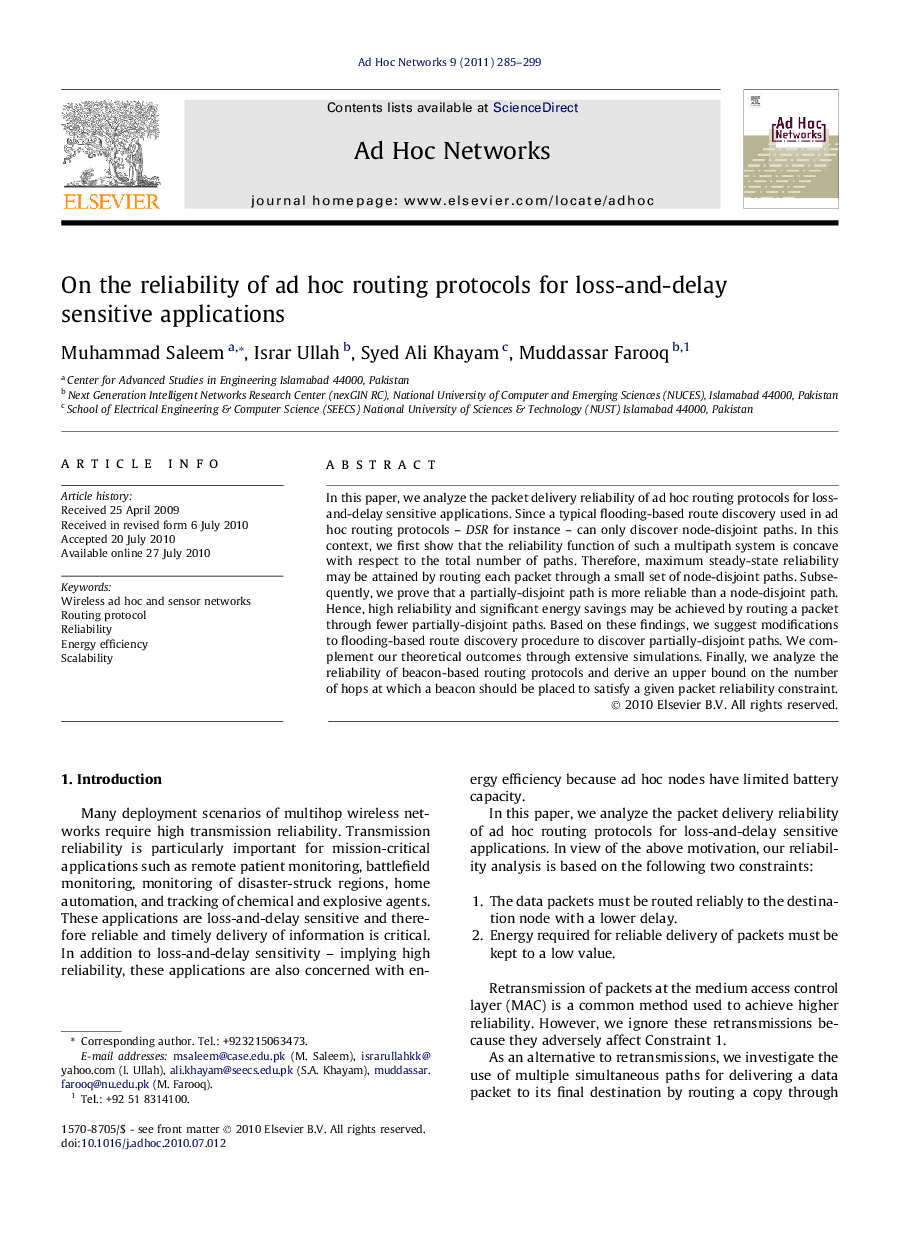| Article ID | Journal | Published Year | Pages | File Type |
|---|---|---|---|---|
| 448328 | Ad Hoc Networks | 2011 | 15 Pages |
In this paper, we analyze the packet delivery reliability of ad hoc routing protocols for loss-and-delay sensitive applications. Since a typical flooding-based route discovery used in ad hoc routing protocols – DSR for instance – can only discover node-disjoint paths. In this context, we first show that the reliability function of such a multipath system is concave with respect to the total number of paths. Therefore, maximum steady-state reliability may be attained by routing each packet through a small set of node-disjoint paths. Subsequently, we prove that a partially-disjoint path is more reliable than a node-disjoint path. Hence, high reliability and significant energy savings may be achieved by routing a packet through fewer partially-disjoint paths. Based on these findings, we suggest modifications to flooding-based route discovery procedure to discover partially-disjoint paths. We complement our theoretical outcomes through extensive simulations. Finally, we analyze the reliability of beacon-based routing protocols and derive an upper bound on the number of hops at which a beacon should be placed to satisfy a given packet reliability constraint.
